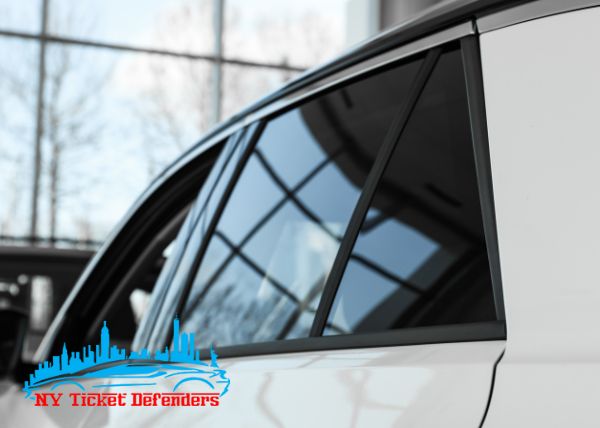Why Auto Window Tinting is a Must-Have for Modern Automobiles
Why Auto Window Tinting is a Must-Have for Modern Automobiles
Blog Article
Home Window Tinting Rules and Guidelines: What You Need to Know Before Tinting Your Automobile
Before proceeding with window tinting for your vehicle, it is important to familiarize yourself with the varied laws and guidelines that regulate this technique throughout different states. These policies dictate the allowable degrees of color darkness, usually gauged by visible light transmission (VLT) portions, and include specific stipulations for front windscreens focused on making certain roadway security. Furthermore, particular territories might offer medical exceptions for individuals with certifying conditions. Recognizing these intricacies can conserve you from possible legal ramifications, but what are the specific policies in your state?
Summary of Home Window Tinting Laws
Home window tinting regulations are regularly subject to variation across different jurisdictions, mirroring local laws and security factors to consider. These regulations dictate the acceptable degrees of tint darkness and reflectiveness on vehicle home windows, ensuring that chauffeurs maintain sufficient exposure while additionally shielding versus hazardous UV rays and warmth.
Most policies classify window tinting based on the Visible Light Transmission (VLT) percentage, which shows the quantity of light that can pass through the window. Generally, lower VLT portions indicate darker colors. Legislations usually distinguish in between the front, side, and rear windows, with stricter limitations put on the front windshield to improve security for both the motorist and various other roadway customers.
Conformity with window tinting laws is critical, as violations can result in penalties, mandatory elimination of the tint, and possible increases in insurance premiums. It is essential for automobile proprietors to familiarize themselves with regional laws before proceeding with home window tinting setups.
State-by-State Color Laws
Comprehending the certain window tinting laws in each state is crucial for lorry owners looking for to follow the regulation. Each state in the U.S. has developed its very own set of policies controling home window tinting, which can differ substantially. These regulations usually dictate the permitted levels of tint darkness, the sorts of home windows that can be tinted, and any type of medical exceptions that might apply.
As an example, states like The golden state have rigorous constraints on tint darkness for front home windows, while others, such as New Mexico, may allow darker colors. In addition, certain states mandate details presence percents for various home windows, consisting of the windscreen, front side home windows, and back home windows. It is essential for vehicle owners to familiarize themselves with their state's regulations to stay clear of possible fines or penalties.
Furthermore, some states may require a certification sticker to be placed on tinted home windows, indicating conformity with state laws. Failing to abide by these regulations not only risks lawful repercussions yet can likewise impact safety and presence while driving. For that reason, vehicle proprietors must carry out comprehensive research or consult local authorities to ensure full understanding and conformity with state-by-state color regulations.
Allowed Color Levels and Kinds
Many automobile proprietors may be surprised to discover that allowed tint degrees and kinds vary extensively throughout different states. Each state has actually developed its very own regulations relating to the permissible you can find out more darkness and reflectivity of window tint, usually determined by Visible Light Transmission (VLT) portions. VLT refers to the quantity of light that can travel through the tinted windows; therefore, a reduced percentage shows a darker color.

Furthermore, the kinds of color products enabled can vary, with some states prohibiting metal or mirror-like finishes. It is vital for car owners to familiarize themselves with their state's details laws to guarantee compliance. Non-compliance can result in fines, mandatory elimination of the tint, or other legal effects, making it necessary to understand these regulations before waging installation.
Medical Exceptions for Tinting
While not all states offer allowances for clinical exceptions regarding home window tinting, those that do identify the requirement for details individuals to boost exposure and convenience due to medical conditions. Numerous clinical conditions, such as lupus, skin cancer cells, and certain eye conditions, can make people especially delicate to sunlight. These people may need darker tints to shield themselves from hazardous UV rays and glare.

It is necessary to note that even with a clinical exception, there may still be constraints on the level of color allowed. Compliance with state regulations makes sure that individuals are both secured and within legal limits. Those thinking about clinical exceptions ought to call their local Department of Motor Cars or equivalent authority to comprehend the procedures and needs required to obtain click now an exception efficiently.
Charges for Non-Compliance
Falling short to follow window tinting legislations can result in considerable charges, which differ by state. Police are equipped to provide citations for lorries that do not adhere to the defined tinting regulations. These penalties commonly include fines, which can vary from small total up to numerous hundred dollars, depending upon the extent of the offense and the state concerned.
In some jurisdictions, repeated offenses may lead to intensifying fines or added fines, such as mandatory court appearances. Non-compliance may necessitate the elimination of unlawful tinting, usually at the proprietor's cost. In extreme cases, regular wrongdoers may deal with suspension of their automobile enrollment until conformity is attained.
Furthermore, insurance implications might occur from receiving numerous citations for home window tint violations. Insurance firms may check out such offenses as a sign of riskier behavior, possibly resulting in increased premiums or problem in insurance coverage.
To prevent these penalties, it is important for automobile owners to familiarize themselves with their neighborhood window tinting regulations and ensure that their lorry complies (Window Tinting). This positive method not just stays clear of legal implications but likewise promotes road safety
Verdict

Many guidelines categorize home window tinting based on the Visible Light Transmission (VLT) percentage, which suggests the amount of light that can pass with the window. Conformity with window tinting policies is crucial, as offenses can result in penalties, mandatory removal of the color, and possible increases in insurance coverage premiums.Understanding the specific home window tinting guidelines in each state is crucial for vehicle proprietors looking for to comply with the law. These regulations typically dictate the permitted degrees of color darkness, the kinds of windows that can be tinted, and any medical exceptions that might use.
For instance, states like The golden state have strict constraints on tint darkness for front windows, while others, such as New Mexico, might permit darker tints.
Report this page